When art meets emergency at Refuge
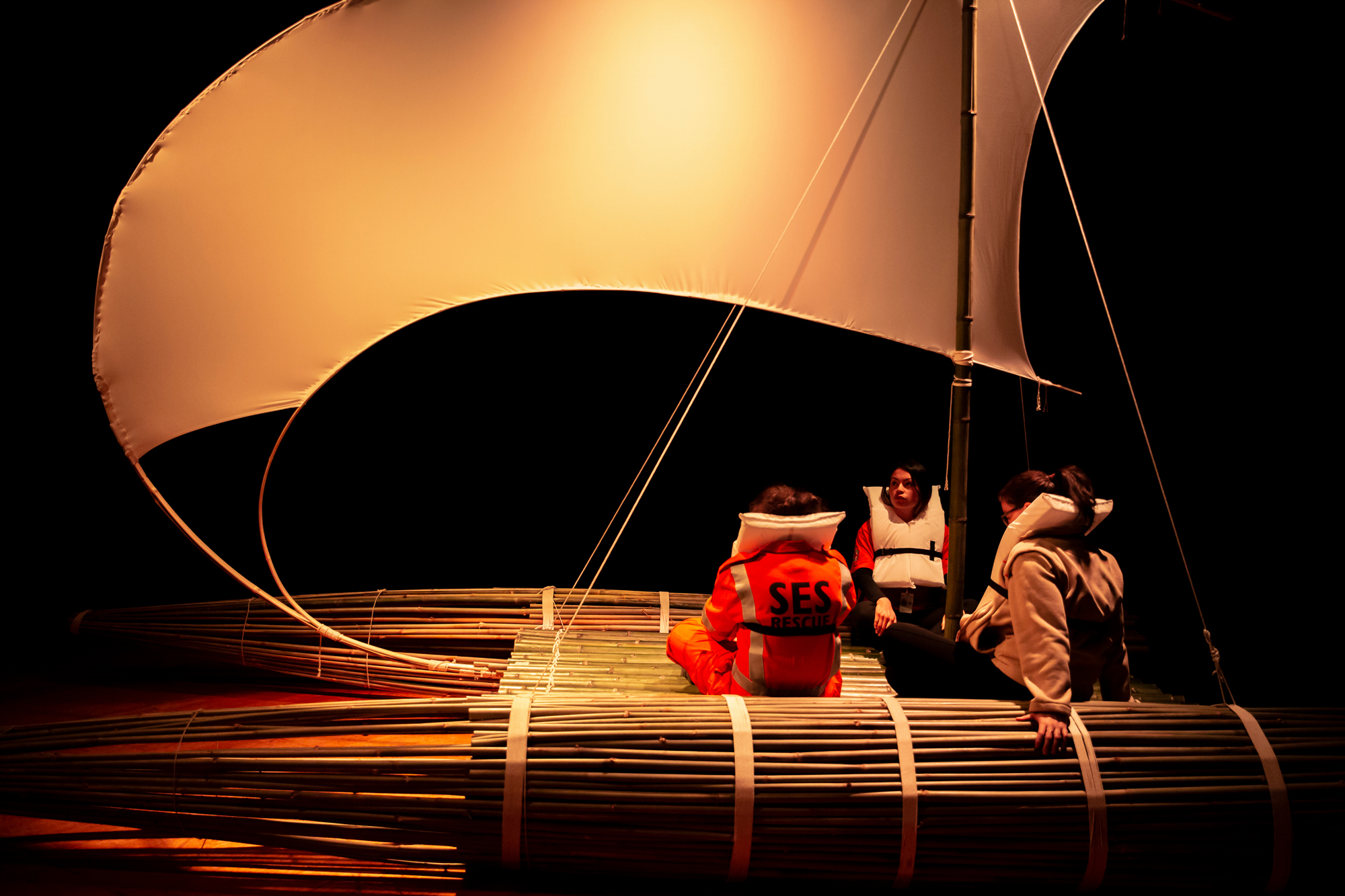
Protection from natural or human-made disasters in cities is often a top down affair, organised by federal or state government. What if communities were empowered to react with creative solutions in the face of catastrophe? Georgia Symons walks us through the interdisciplinary project Refuge at Arts House in Melbourne to discover what happens when art meets emergency.
Floods. Heatwaves. Pandemics. When we think about climate catastrophe, the images that come to mind are of overwhelming natural phenomena. But how do we imagine ourselves, and our human responses, within these disasters?
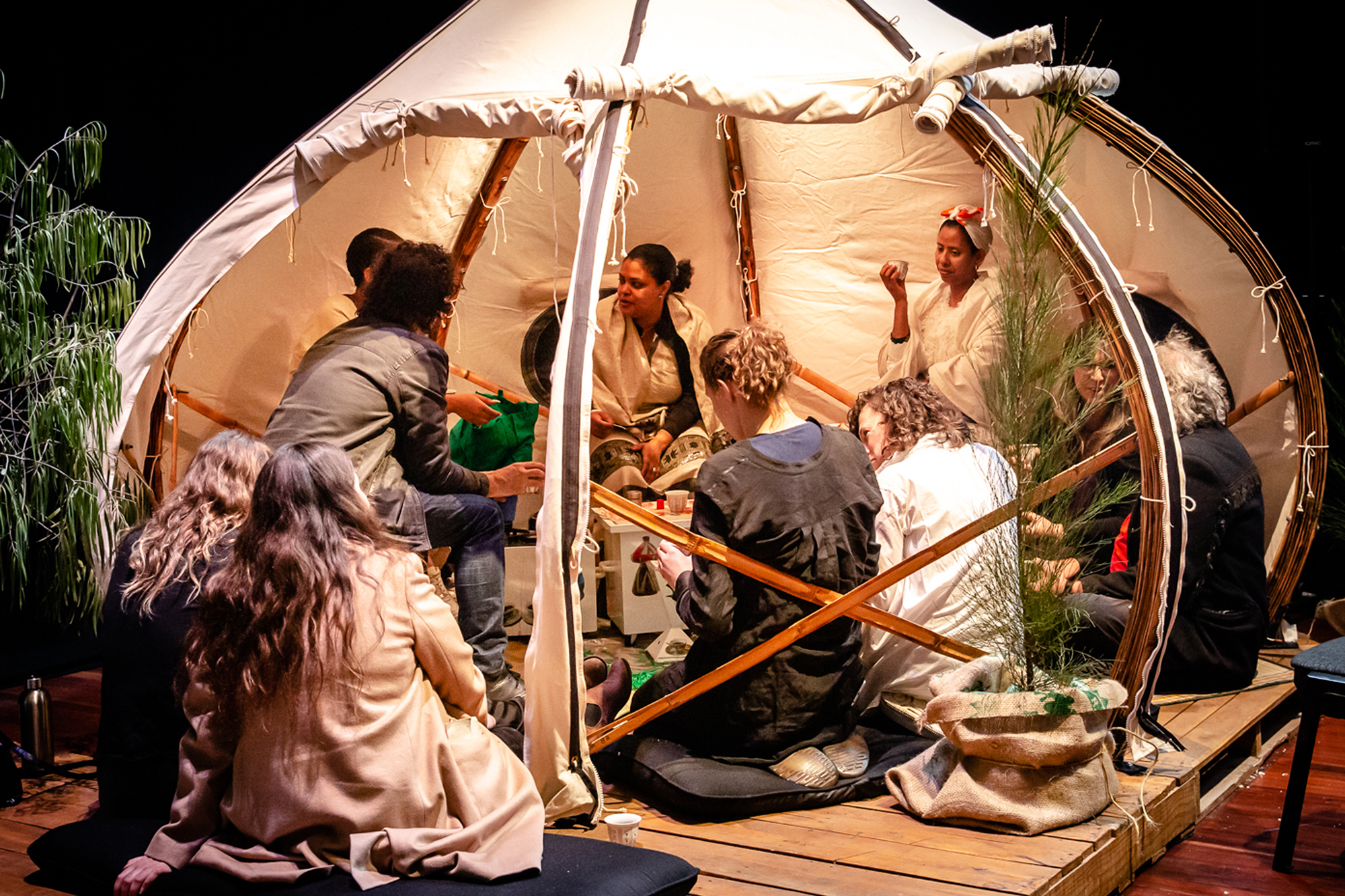
Here in Melbourne, as in many places, our existing disaster relief plans are military in character: a top-down chain of command marshalling the passive masses. But these catastrophes ultimately happen to communities, and the social destruction wrought by disasters can be as devastating as the physical. So perhaps there is room for communities to lead their own unique and creative responses to catastrophe. This is the inquiry at the heart of Refuge, a five-year project initiated by Arts House in North Melbourne, and led by artists, local residents, emergency services staff, and a smattering of business, research and community partners.
“Refuge takes the form of calling out to the community to play a game,” says Lorna; however, “Pandemic – now, didn’t that make you stop writing for a moment?” And she was right – my hand had involuntarily wobbled. It’s not as easy to ‘play’ with pandemic, as with the tangible phenomena of floods or heatwaves.
The Refuge project was seeded by then-artistic director of Arts House, Angharad Wynne-Jones, in 2016. Angharad tells me that the initial idea was very personal: over the past ten years, she found, held and then slowly lost the conviction that artists working together with scientists was all that was needed to solve climate change.
Once she realised that disaster was inevitable, Angharad says, “I felt very personally motivated by feeling very unsure about my own capacity to respond ethically under pressure. I thought that, potentially, rehearsing some of those moments of ethical choice in a situation of crisis might mean that I might train myself to do the right thing.”
From this intensely personal intent has grown a five-year commitment from Arts House, Emergency Management Victoria, Melbourne University, Red Cross and, perhaps most crucially, a dedicated group of local artists and community members.
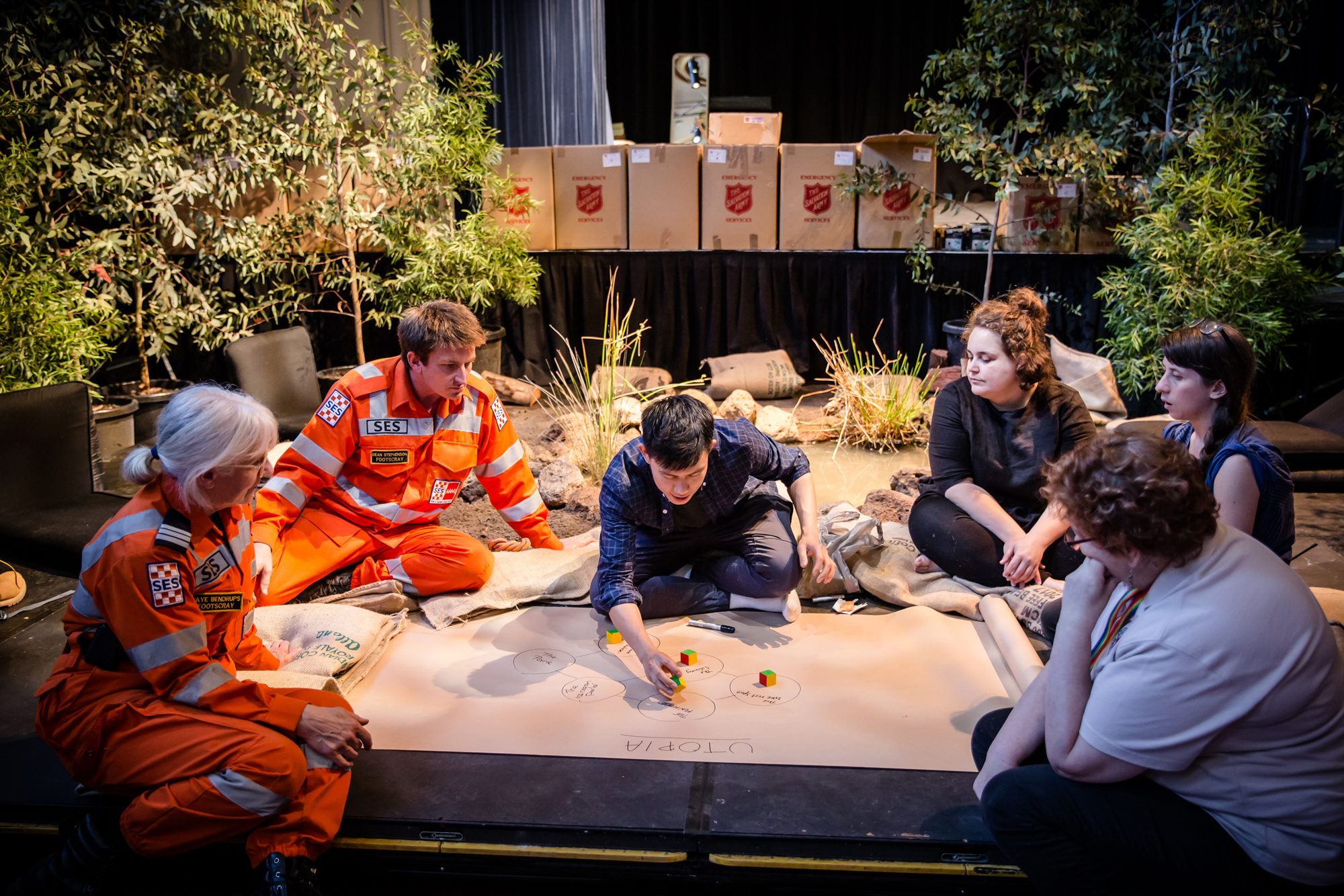
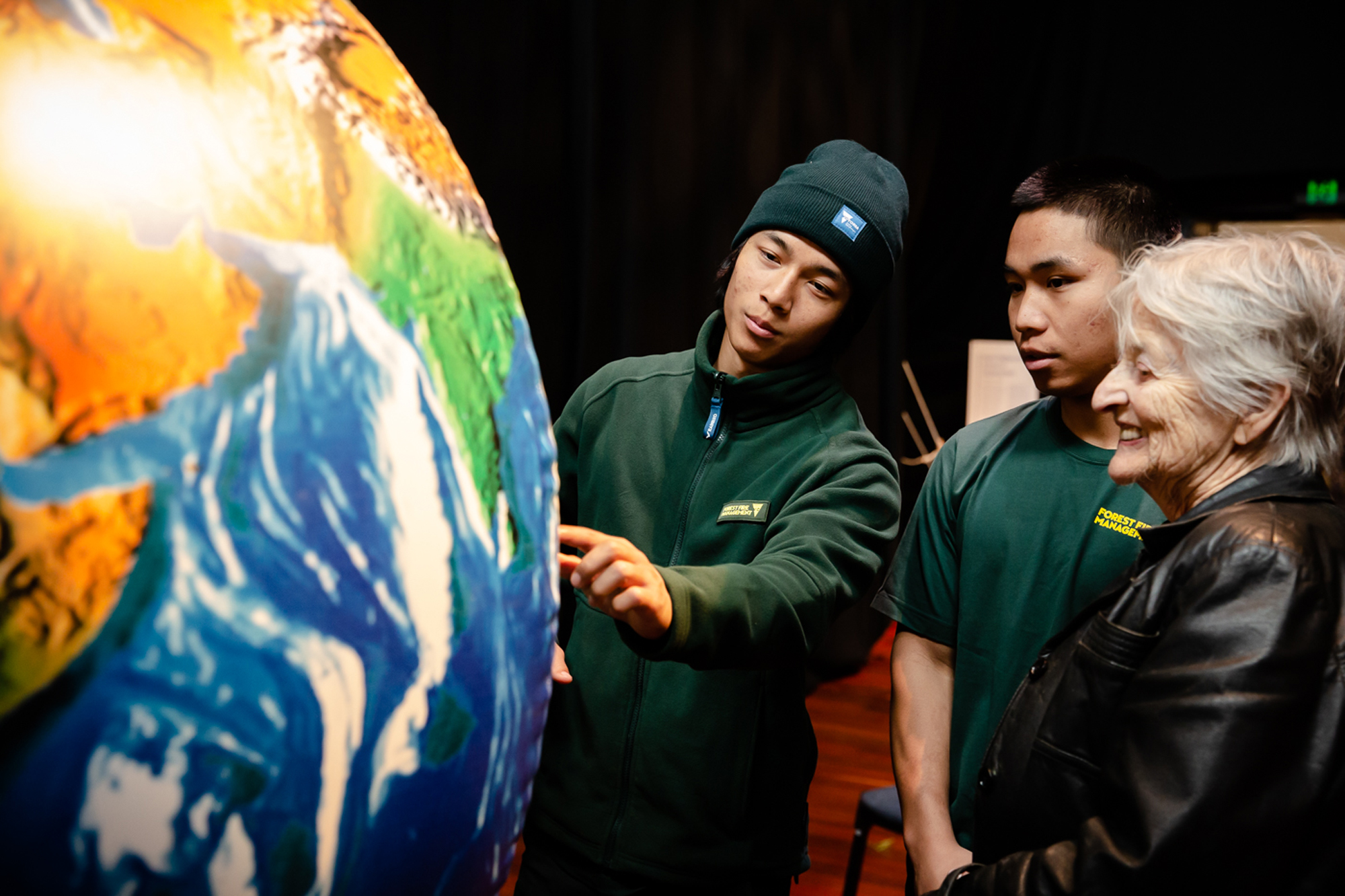
But what exactly is Refuge? In terms of its public-facing outcomes, it is an annual event at North Melbourne Town Hall, inviting anyone – but especially North Melbourne locals – to imagine themselves into various climate-related disaster scenarios. 2019 will mark the fourth of the five planned events, with each year taking a different catastrophe as its theme: floods in 2016, then heatwave, pandemic, and the final two years will consider displacement. Artistic propositions across the life of Refuge have included shared meals, escape rooms, human-powered electricity generators and audience-run emergency call centres.
Beyond this simplistic summary of outcomes, defining Refuge can be devilishly difficult. Various collaborators are careful to call it “a process, not a project” or “a methodology, not a model”, and all are initially overwhelmed when I ask them to define the work. A number of participants, including artist Hannah Donnelly, comment on the commitment that the Refuge community makes to working in/through uncertainty, and to piecing together a radically interdisciplinary approach without knowing the exact future of the work. Hannah says this approach “felt more like what I would call, not world-building because it was very localised, but building-across-disciplines to make a new world.”
Emily Sexton, current artistic director of Arts House, is well-practised in distilling all of this complexity to communicate the core of the project. She defines it this way: “Refuge is a five-year project exploring the intersection of art and emergency. It’s been grounded in North Melbourne, so community connection has been very important when we’re thinking about how we might prepare for climate change crises. We believe that you need to start with your neighbours and the people closest to you, to look around and think through what preparedness looks like for the inevitable crises that will continue to come our way as the climate is changing.”
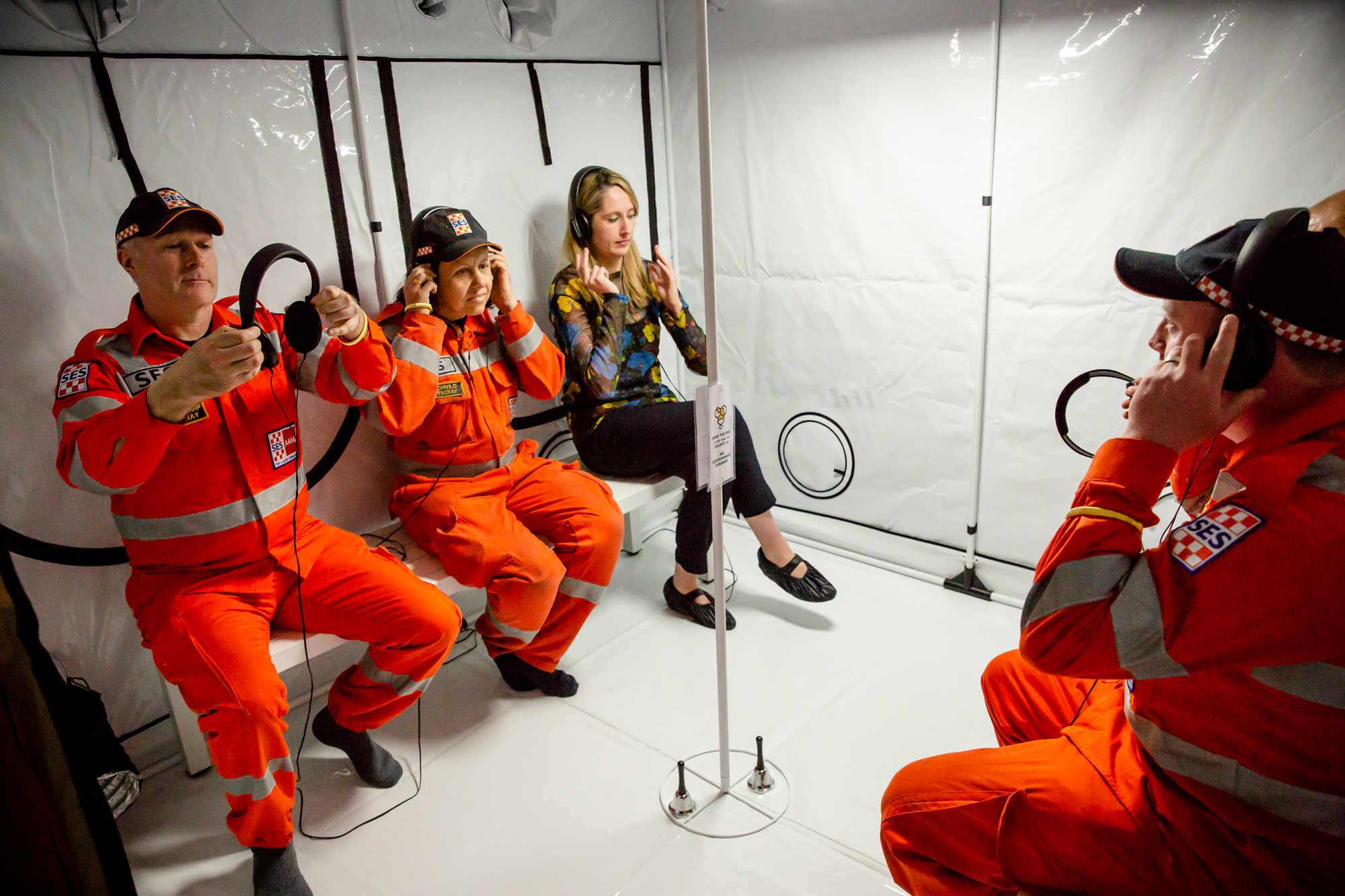
The Refuge program works on an annual iterative cycle. Artist Jen Rae articulated the three stages of this cycle as ‘lab’, ‘rehearsal’ and ‘evaluation’. The lab is a time for the artists, emergency services workers, local residents and other responsible parties to come together and consider the theme and approach for the year’s work. Angharad described the first-ever Refuge lab in 2016 as being somewhat clunky. “Artists [typically] have very low status in the hierarchy of disaster management. So we were pretty careful in how we structured the labs to ensure that the artists got to speak about their practice… [the first lab] was curated to within an inch of its life.” But this first lab set the foundations for a first ‘rehearsal’ that exceeded expectations.
The rehearsal is also referred to as the ‘performance’ by some. Essentially, this is the part where the public are invited in, with an invitation to rehearse the catastrophe. And while the initial lab had generated some terrific energy, the team still didn’t know quite what to expect. Jen told me: “I think there were about 600 or 700 people that came through in those 24 hours. I remember being in the stairwell with some of the other artists, going up and down, and going, ‘Oh my god, there are people here!’ It was exhausting, but it was absolutely exhilarating.” Hannah, who was responsible for leading a sleepover at the Town Hall, could also feel the significance of the work on the night. She had noticed, in the lab and the lead-up to the rehearsal that, between the artists and the emergency services staff, “our ways of thinking were very different. But when it came to [the 24-hour public event for] Refuge, they understood immediately, when they saw everything happening, what we were trying to do.” This first public event took the trust and investment of all the disparate parties who had come together for the lab, and successfully consolidated that energy into a unique event.

After the perceived success of this first rehearsal, on to ‘evaluation’, in which the team dive deep into what they learned and how they can each carry this learning forward – both into the next Refuge process and into the rest of their practice. A participant from the disaster management sector recalled a turning point in this first evaluation. He could see around him that many of the contributors thought that the project was a great success, and that they were keen to turn the actions and events of this year into a repeatable model. “I just said, ‘Please don’t create a template. This needs to be authentic and genuine every time, so that if you’ve never been involved before, you’re welcome to join.’ The [emergency management] sector is good at creating templates. This is often done to be efficient and effective in learning from previous events, but can turn what was great into a simple checklist and process to tick a box.”
And so, while the basic building blocks have remained relatively stable (a yearly lab, a public rehearsal event, and an evaluation), all participants have approached each year with openness to new approaches, considerations and voices. And in this way, a community of practice has developed. As this community has grown stronger, so have the imagined catastrophes grown greater. Floods (2016) are usually temporary, and there are measures one can take to keep out or mitigate the flows of water. Heatwaves (2017), however, are harder to avoid. One can try to keep cool, but if one is not lucky enough to live in an air-conditioned building, the heat is inescapable. But at least it is temporary. North Melbourne resident and artist Lorna Hannan, who has been involved in the project since its inception, spoke to me about a wobble in the third year, looking at the theme of pandemic.
“Refuge takes the form of calling out to the community to play a game,” says Lorna; however, “Pandemic – now, didn’t that make you stop writing for a moment?” And she was right – my hand had involuntarily wobbled. It’s not as easy to ‘play’ with pandemic, as with the tangible phenomena of floods or heatwaves.
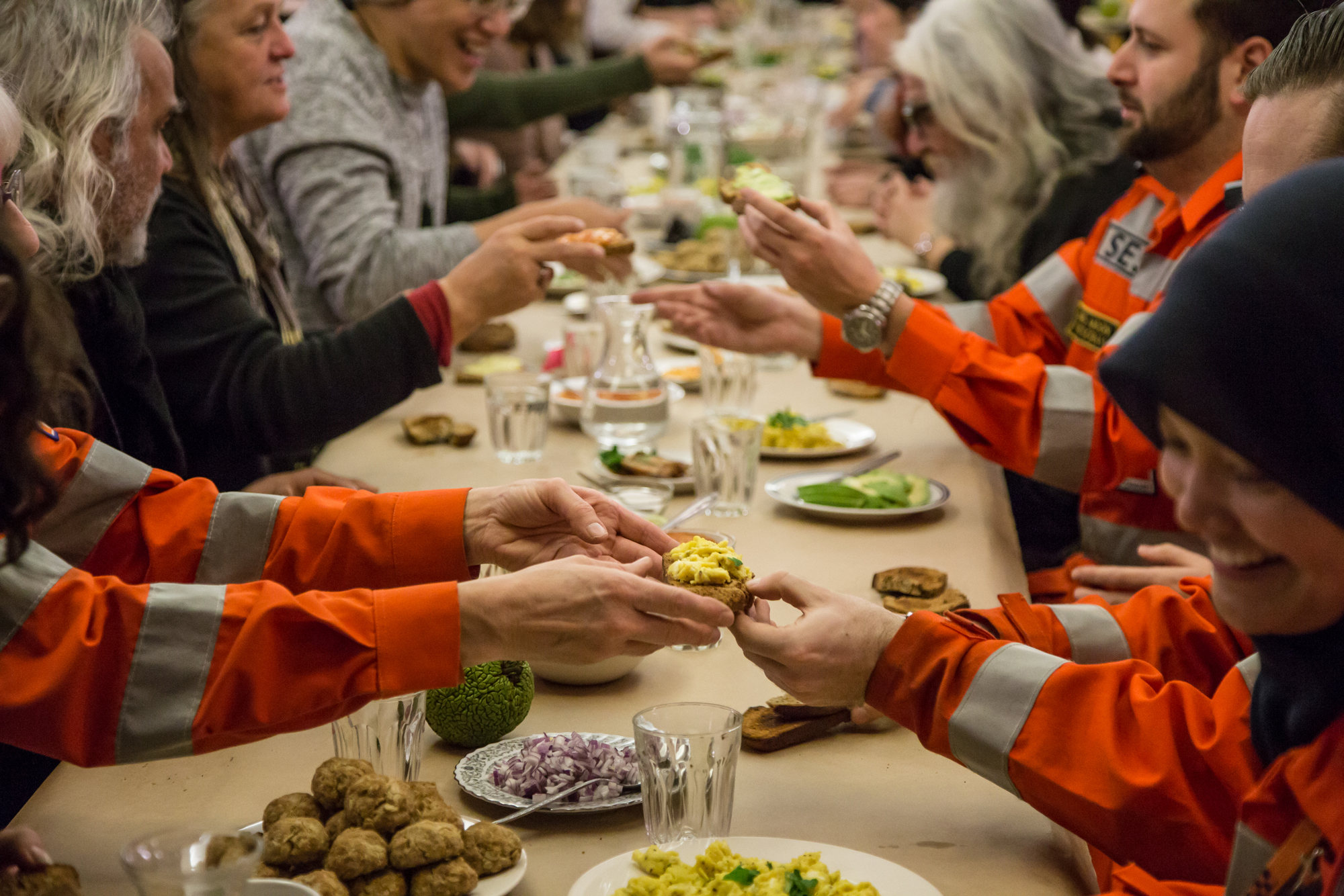
But even here, there were things to be learned. Over the past few years of Refuge, Lorna’s contribution has been the ‘Ruth Crow Corner’, where visitors are invited to the simple yet meaningful activity of sharing a cup of tea and a conversation with friends and strangers. In the first two years, Lorna had found her approach quite effective – by simply holding a space
and providing the refreshments, she was able to foster meaningful exchanges between participants. But during the ‘pandemic’ year, something shifted. Lorna discovered that the gravity of the topic of pandemic prevented people from opening up in the same easy way that they had in the past. The solution Lorna found to this problem was the idea of keeping people busy. She introduced an activity to the space, inviting people to decorate a face mask. She found that, with their eyes on their work and their hands busy, people were more readily able to open up and discuss the difficult topic of that year’s conversation.
Insights like Lorna’s abound in the Refuge process. But how do these insights flow through to change beyond the project? For Hannah Donnelly, the insights that came from her involvement in Refuge have impacted not only the rest of her arts practice, but the way she lives. “I was really interested in looking at the preparedness that different Indigenous stories and knowledge can provide; preparedness that is 60,000 years old, because the stories in the place are preparedness. Refuge changed my thinking, to [ask], ‘How, in anything I do or write, is it contributing to being prepared for climate traumas?’”

In talking to everyone from community members to artists, producers and emergency services personnel, it’s clear that the impact of Refuge as an action research process has less to do with hard data and hastily written policies, and more with culture change. “I don’t see Refuge as an intimate or small project,” says Emily Sexton. “I do see it as a deep project that has quite lasting implications. I don’t think we need to see audiences of tens of thousands. That would be a very odd measure for the kind of work we’re doing [that concerns] how we look after each other.” And a staff member from an emergency management organisation told me that Refuge “has become quite a practical action research project. “The emergency management sector is not only listening and participating, but starting to commit to something else that is far different from what a normal hazard and risk [program] might look like.”
There are no clear answers just yet as to whether the program will continue beyond its five-year milestone next year. But, while groups around the world have been inquiring into the Refuge ‘model’, much is made by all involved of how this process has been specifically shaped by and for North Melbourne. I felt a little sceptical and uncertain of this – surely the lab–rehearsal–evaluation model could work in many places? – until I spoke to Lorna, who has been a resident in North Melbourne for 50 years. She told me about the specificity of the North Melbourne Town Hall, how it’s still called ‘the Town Hall’ despite not having served that function since 1907. She told me how the building was built to be a “fortress of government” at a time when the local area was quite unruly, and how important it is to people now that the building is being used in more open ways, including its use as a registered emergency refuge centre. And then there is the matter of North Melbourne’s distinct urban cultural properties. “North Melbourne has got these really clear, distinct boundaries,” says Lorna. “But the suburb is not self-sufficient. Its dependence on the outside world – for instance, for food – is serious.”
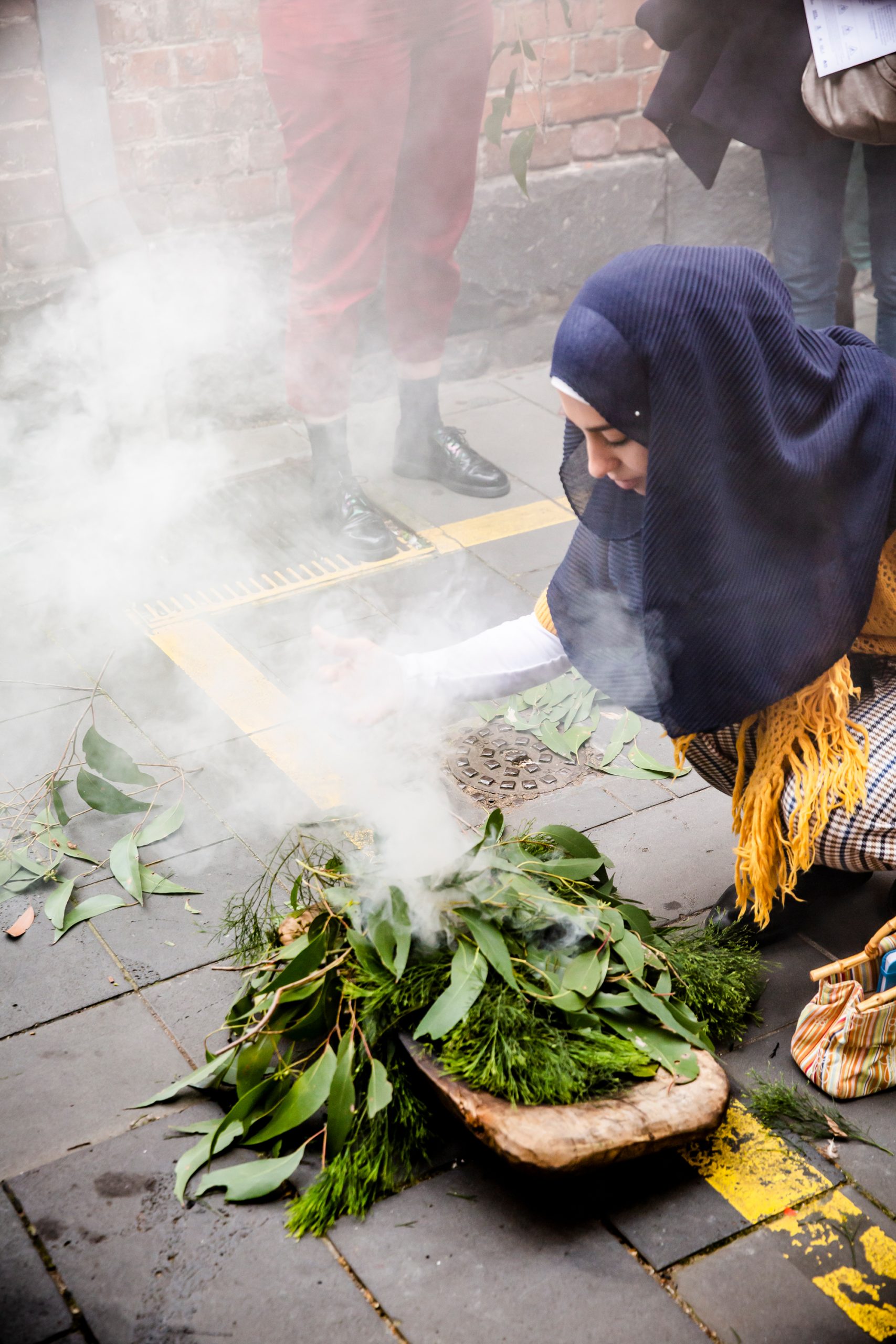
So, while similar approaches would work brilliantly in many places around the world, the key to the success of a project like this is to start where you are. In this sense, the work of Refuge is only just beginning. With the local community welcoming a growing number of newly arrived citizens, the Refuge team has begun reaching out to these new residents, slowly forming the kinds of sustained relationships that matter in a crisis. Angharad mentions to me that, looking back on the project, the actual content of each year’s Refuge project (almost) didn’t matter. “The thing that came through in some of the evaluations was that connection between people was the critical element of resilience… If connection is the thing, it doesn’t matter how that happens. It doesn’t have to be named as something that is directly connected to the crisis of climate change… [I learned] not to be precious; to understand the value of that connection, no matter how or where it’s created, or for what purpose.”
Thank you Georgia, for bringing to life this important project. You can also find this article in the pages of #12: (Future) Legacies. Check out some of the other articles from that issue on our website here, or get your free copy at selected stockists.